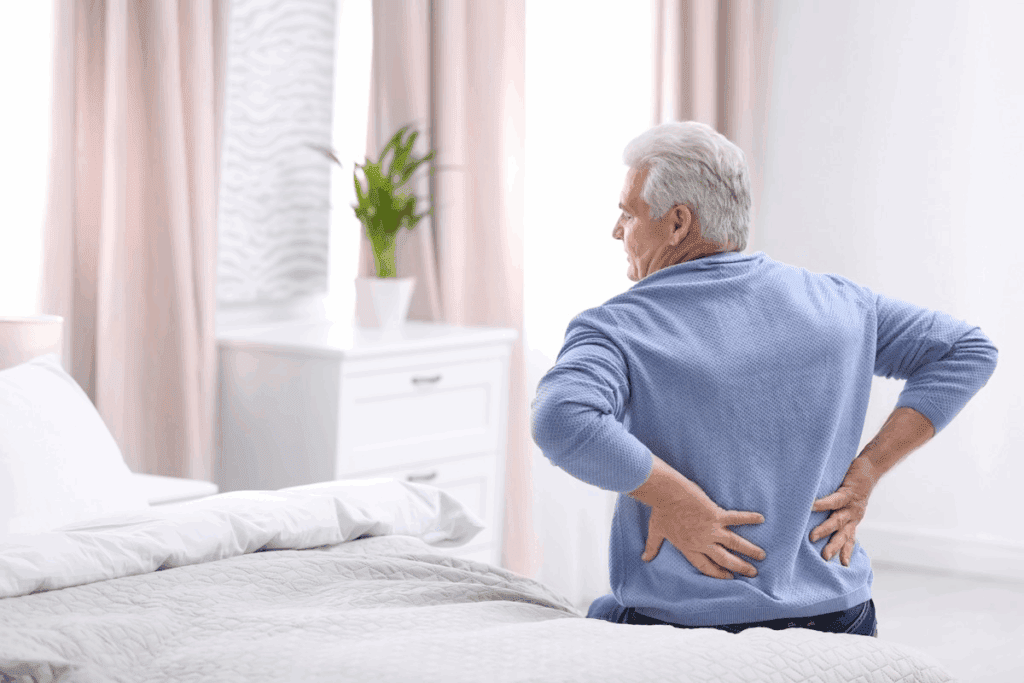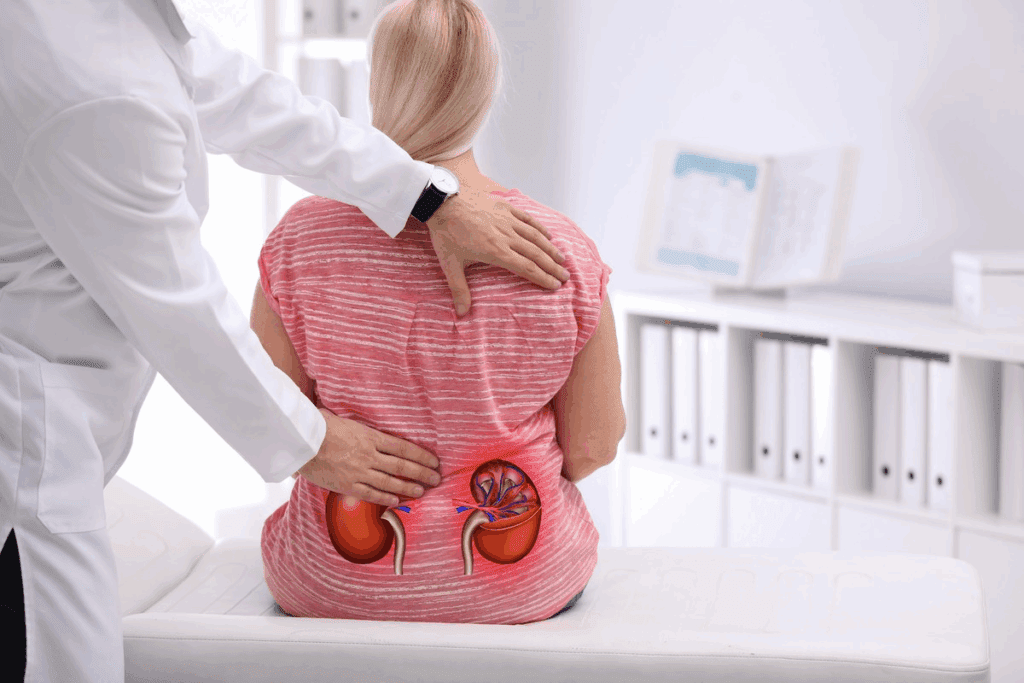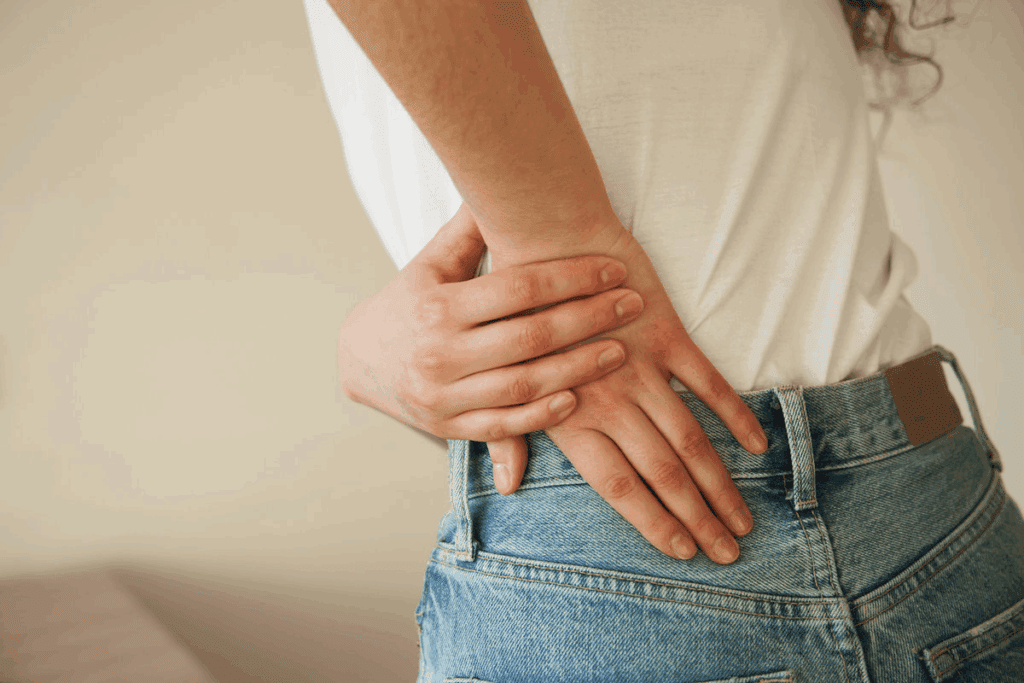Last Updated on October 31, 2025 by Bilal Hasdemir

Calcium oxalate kidney stones are the most common type of kidney stone.brown kidney stonesBarium for CT: 7 Key Facts About Safety and Usage They make up about 80 percent of all calcium-based stones. These stones are made from minerals and salts in urine inside the kidneys.
It’s important to prevent calcium oxalate stones for your health. They can come back often, causing a lot of pain and problems. At Liv Hospital, we use a detailed approach with many experts to help you prevent them.

Calcium oxalate stones are the most common type of kidney stone. They form when there’s too much calcium and oxalate in the urine. These stones are dark in color and form when the urine has too much calcium and oxalate.
Most kidney stones are made of calcium, usually calcium oxalate. Oxalate is made by the liver or comes from what we eat. Knowing how these stones form helps us prevent them.
Calcium oxalate stones are crystalline structures that form in the kidneys. They happen when there’s too much calcium and oxalate in the urine. These stones can be monohydrate or dihydrate, with monohydrate being more common and denser.
Many things can affect how these stones form. Diet, how much we drink, and our health can all play a part. Eating too much oxalate, for example, can increase the risk of getting these stones.
Calcium oxalate stones are the most common, making up about 80% of all kidney stones. If we don’t prevent them, about 50% of people will get another stone within 5-10 years.
| Stone Type | Prevalence | Recurrence Rate |
| Calcium Oxalate | 80% | 50% within 5-10 years |
| Other Types | 20% | Varies |
The formation of calcium oxalate stones is complex. It involves how saturated the urine is with calcium and oxalate, the presence of substances that help or hinder crystal formation, and the urine’s pH. Knowing these factors helps us find ways to stop stones from forming.
Drinking enough water is key. It helps dilute the urine, lowering the levels of calcium and oxalate. Eating the right foods, like limiting oxalate and getting enough calcium, also helps prevent these stones.

It’s important to know how to spot dark colored kidney stones. This helps figure out why they formed and how to treat them. Dark stones, like black or dark brown ones, have special compositions that need special tests.
Dark kidney stones can look different. They might be small and rough or big and smooth. The look of the stone can tell us about its makeup and why it formed.
The color of these stones can be dark brown to black. This is because of certain compounds. For example, calcium oxalate monohydrate stones are usually dark and have a special look under a microscope.
Calcium oxalate monohydrate (COM) stones are a common dark type. They are hard and hard to treat. COM stones can form for many reasons, like diet, how much you drink, and health conditions.
Getting a correct diagnosis for dark kidney stones involves a few steps. Imaging techniques like CT scans or X-rays can spot the stones and tell us about them.
When a stone is passed or taken out, stone analysis can tell us a lot about it. This is key for figuring out why the stone formed and how to prevent more.
The formation of calcium oxalate kidney stones is influenced by genetic, medical, dietary, and environmental factors. Knowing these risk factors is key to preventing them.
People with a family history of kidney stones are more at risk. Studies show that about 10 percent of people will get kidney stones in their lifetime. Genetic predisposition is a big factor in this, making prevention important for those at risk.
Some medical conditions raise the risk of calcium oxalate stones. These include dehydration, obesity, and digestive diseases and surgery. For example, conditions like Crohn’s disease or ulcerative colitis can increase risk due to changes in bowel habits and absorption.
Diet is very important in preventing calcium oxalate stones. Eating foods high in oxalate, like spinach and beets, can increase risk. Also, a diet low in calcium can contribute to stone formation, as calcium helps bind oxalate in the gut.
Environmental factors, like not drinking enough water, also play a big role. Dehydration makes urine more concentrated, raising the risk of stones. So, drinking enough water is a key part of prevention.
Understanding these risk factors helps people take steps to prevent calcium oxalate kidney stones. This includes changing diet, managing health conditions, and knowing about genetic risks.
Diet is key in preventing kidney stones. Knowing what to eat can lower your risk. A good diet helps control factors like high oxalate levels, not enough calcium, and too much animal protein.
Eating foods high in oxalate can lead to calcium oxalate stones. Foods to limit include:
You don’t have to cut out these foods completely. Just watch your portion sizes. Talking to a healthcare provider or dietitian can help you manage oxalate in your diet.
Getting enough calcium is vital for preventing stones. Aim for 1200mg of calcium per day. You can get this from food and supplements if needed. Calcium helps bind with oxalate, reducing the risk of stone formation.
Dairy, leafy greens, and fortified foods are great sources of calcium. Spread out your calcium intake to get the most benefits.
Eating too much animal protein can raise your risk of stones. Limiting animal protein from meat, poultry, fish, and eggs is a good idea.
Eating a variety of protein sources, like beans and tofu, can help. Drinking plenty of water also helps by diluting your urine and reducing stone risk.
Drinking enough water is key to preventing kidney stones. It helps dilute urine, making it less likely for minerals to form stones. We suggest drinking lots of fluids all day to keep your kidneys healthy.
Finding the right amount of water can be tricky. It depends on your age, weight, and how active you are. A good rule is to drink one ounce of water for every two pounds of body weight. So, if you weigh 150 pounds, aim for 75 ounces of water daily. Drinking more water can really lower your risk of getting kidney stones.
When you drink water matters too. Drinking fluids all day keeps your body hydrated evenly. It’s best to drink before bed and during the night to avoid concentrated urine. Staying consistent is important for preventing kidney stones.
Not all drinks are good for preventing kidney stones. Water is the best because it hydrates without extra calories or substances that can cause stones. Herbal teas and diluted fruit juices are also good. But, sugary drinks and those high in oxalate, like some fruit juices, should be limited. It’s important to avoid drinks that can increase your risk of stones.
Understanding the role of fluid intake is vital. By staying hydrated, you can lower your risk of kidney stones. We recommend that everyone, but those with a history of stones, focus on drinking enough water as part of their prevention plan.
Reducing sodium in your diet is key to avoiding kidney stones. Too much sodium can cause your body to lose more calcium in your urine. This increases your risk of getting kidney stones. We’ll look at how this happens and give tips on cutting down sodium.
Too much salt means more calcium in your urine. This is a major part of most kidney stones. When you eat a lot of sodium, your body takes in more. This can make your urine lose more calcium, raising your risk of stones.
The American Heart Association says to keep sodium under 2,300 milligrams a day. If you’ve had kidney stones, try to get it down to 1,500 milligrams. Always talk to a doctor to find the right sodium level for you.
| Sodium Intake Level | Daily Recommendation | Effect on Kidney Stone Risk |
| High Sodium (>2,300 mg) | Not Recommended | Increased Risk |
| Moderate Sodium (1,500-2,300 mg) | General Recommendation | Moderate Risk |
| Low Sodium (<1,500 mg) | Recommended for High-Risk Individuals | Lower Risk |
Many foods, like canned soups and frozen meals, are high in sodium. Reading labels and picking low-sodium foods can help control sodium intake.
To prevent kidney stones, it’s key to know how to balance calcium and oxalate in your diet. The relationship between these two nutrients is important. It affects your risk of getting calcium oxalate stones.
Calcium and oxalate bind together in the gut. This forms insoluble complexes that are excreted in the stool. This binding is vital because it reduces oxalate absorption into the bloodstream. This, in turn, lowers the chance of oxalate ending up in the urine and forming stones.
The calcium-oxalate binding mechanism is a natural process. This binding is key for preventing oxalate absorption. When calcium and oxalate combine in the intestines, they form an insoluble compound. This compound is then eliminated through the stool, reducing the risk of oxalate being excreted in the urine.
It’s important to note that eating calcium without oxalate doesn’t significantly lower the risk of kidney stones. The key is to eat calcium-rich foods with oxalate-rich foods to maximize the binding effect.
Dairy products, leafy greens, and fortified plant-based milk are great sources of calcium. Including a variety of these foods in your diet can help ensure you’re getting enough calcium. It’s better to get calcium from foods than from supplements unless a healthcare professional advises you to do so.
The timing of calcium intake is as important as the amount. Consuming calcium with meals that contain oxalate can enhance the binding mechanism. For example, having a calcium-rich dessert after a meal with oxalate-rich foods can be beneficial.
It’s also important to spread out your calcium intake throughout the day. This helps keep a consistent level of calcium in the gut. This maximizes the opportunity for oxalate binding.
By understanding and implementing these strategies, you can effectively balance calcium and oxalate in your diet. This reduces your risk of developing kidney stones.
Clinical trials have found important dietary changes to lower kidney stone risk. A key study showed a big drop in stone return with a certain diet.
A study found a 51% drop in stone return at 5 years for those on a special diet. This diet included enough calcium, less animal protein, and low sodium. The study said, “A diet rich in calcium, low in animal protein and sodium, can greatly cut down stone risk.”
“A diet that is adequate in calcium and low in animal protein and sodium can significantly reduce the risk of recurrent kidney stones.”
The study highlights the need for a detailed diet plan. Combining enough calcium, less animal protein, and low sodium can greatly lower stone risk. This method tackles several risk factors at once, making it a solid prevention plan.
To make the study’s findings work, lasting diet changes are key. This means getting enough calcium, eating less animal protein, and cutting sodium. By doing these things, people can greatly lower their stone risk.
Dietary changes are key to preventing kidney stones, studies show. By using the findings from trials, people can take steps to lower their risk.
Making healthy lifestyle choices is key to managing and preventing calcium oxalate kidney stones. By adding good habits to our daily lives, we can lower the chance of stones coming back.
Keeping a healthy weight is important for our health and helps prevent kidney stones. Being overweight can increase the risk of kidney stones. So, it’s vital to keep a balanced diet and exercise regularly.
Studies show that being overweight can lead to more kidney stones. This is because it causes changes in our metabolism, like insulin resistance and more acidic urine.
| Weight Management Strategies | Benefits for Kidney Stone Prevention |
| Balanced diet with reduced sodium intake | Decreases urinary calcium excretion |
| Regular physical activity | Improves overall metabolic health |
| Adequate hydration | Dilutes urine, reducing stone-forming substance concentration |
Regular exercise is a big part of a healthy lifestyle and helps prevent kidney stones. Aim for at least 30 minutes of moderate-intensity exercise most days of the week.
Exercise helps with weight control and improves health. It lowers the risk of many diseases, including kidney stones.
Too much stress can harm our health and increase the risk of kidney stones. Try stress-reducing activities like meditation, yoga, or deep breathing exercises to help.
By managing stress well, we can feel better and have fewer kidney stone episodes.
Medical treatments and supplements can help manage kidney stone risk. For those who keep getting kidney stones, these steps are key to stop them.
Doctors might give you medicine to stop certain stones. These drugs control the urine’s minerals and salts, lowering stone risk.
Some common medicines are:
| Medication | Purpose | Common Side Effects |
| Thiazide diuretics | Reduce urinary calcium | Dizziness, more trips to the bathroom |
| Potassium citrate | Prevent stone formation | Stomach upset |
| Allopurinol | Lower uric acid levels | Skin rash, liver issues |
Some supplements can also prevent kidney stones. Always talk to a doctor before taking any new supplements.
Good supplements are:
If you keep getting kidney stones, see a doctor. They can figure out the best treatment and suggest medicines or supplements.
Think about medical treatment if:
With the help of doctors and the right treatments, you can lower your risk of kidney stones a lot.
To prevent calcium oxalate kidney stones, we need a complete plan. This includes changing what we eat, how we live, and sometimes, medical help. Knowing the risks and making smart choices like drinking enough water and eating right can help a lot.
We’ve talked about ways to prevent stones, like eating the right foods and staying active. Losing weight, exercising, and managing stress are also key. For some, taking medicine or supplements is needed to keep stones away.
By using the prevention tips from this article, we can fight against calcium oxalate kidney stones. A doctor can help figure out the best plan for you. They can guide you on how to follow these tips well.
Calcium oxalate kidney stones are mostly made of calcium oxalate. Some are monohydrate or dihydrate types. Knowing this helps in preventing them.
These stones are dark-colored, like brown to black. Checking the stone’s look can tell you if it’s calcium oxalate. Tests can also confirm this.
Eating less of high-oxalate foods and getting enough calcium (about 1200mg daily) helps. Also, eating less animal protein is good. A balanced diet is key.
Drinking enough water is key to avoid kidney stones. Aim for at least 2 liters of urine a day. What you drink and when can also help.
Yes, too much sodium can raise your risk of kidney stones. Keep sodium under 2300mg a day. Watch out for hidden sodium sources.
Some supplements, like potassium citrate, might help prevent stones. But, talk to a doctor before taking any supplements.
Staying healthy, exercising, and managing stress can lower your risk of getting stones again.
Doctors might prescribe thiazide diuretics to prevent stones. Sometimes, treatment is needed for conditions that cause stones.
Calcium supplements can be good when used right, as they bind to oxalate. But, too much calcium can increase stone risk. Always check with a doctor.
Eating calcium-rich foods with oxalate meals can help bind oxalate. Choose good calcium sources like dairy or fortified plant milk. Pay attention to when you eat calcium.
Amico, J., King, M., & Sahni, S. (2022). Shockwave therapy for erectile dysfunction: Systematic review and meta-analysis of randomized controlled trials. American Family Physician, 106(7), 410-412. https://www.aafp.org/pubs/afp/issues/2022/1000/fpin-hda-shockwave-therapy-erectile-dysfunction.html
Subscribe to our e-newsletter to stay informed about the latest innovations in the world of health and exclusive offers!
WhatsApp us